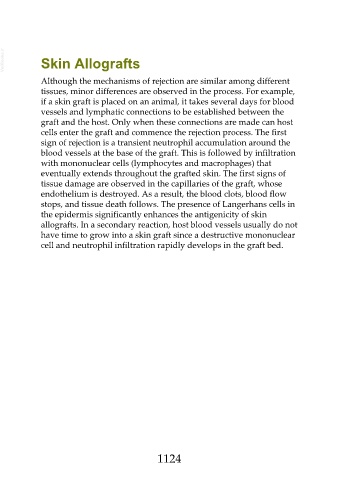Page 1124 - Veterinary Immunology, 10th Edition
P. 1124
VetBooks.ir Skin Allografts
Although the mechanisms of rejection are similar among different
tissues, minor differences are observed in the process. For example,
if a skin graft is placed on an animal, it takes several days for blood
vessels and lymphatic connections to be established between the
graft and the host. Only when these connections are made can host
cells enter the graft and commence the rejection process. The first
sign of rejection is a transient neutrophil accumulation around the
blood vessels at the base of the graft. This is followed by infiltration
with mononuclear cells (lymphocytes and macrophages) that
eventually extends throughout the grafted skin. The first signs of
tissue damage are observed in the capillaries of the graft, whose
endothelium is destroyed. As a result, the blood clots, blood flow
stops, and tissue death follows. The presence of Langerhans cells in
the epidermis significantly enhances the antigenicity of skin
allografts. In a secondary reaction, host blood vessels usually do not
have time to grow into a skin graft since a destructive mononuclear
cell and neutrophil infiltration rapidly develops in the graft bed.
1124

